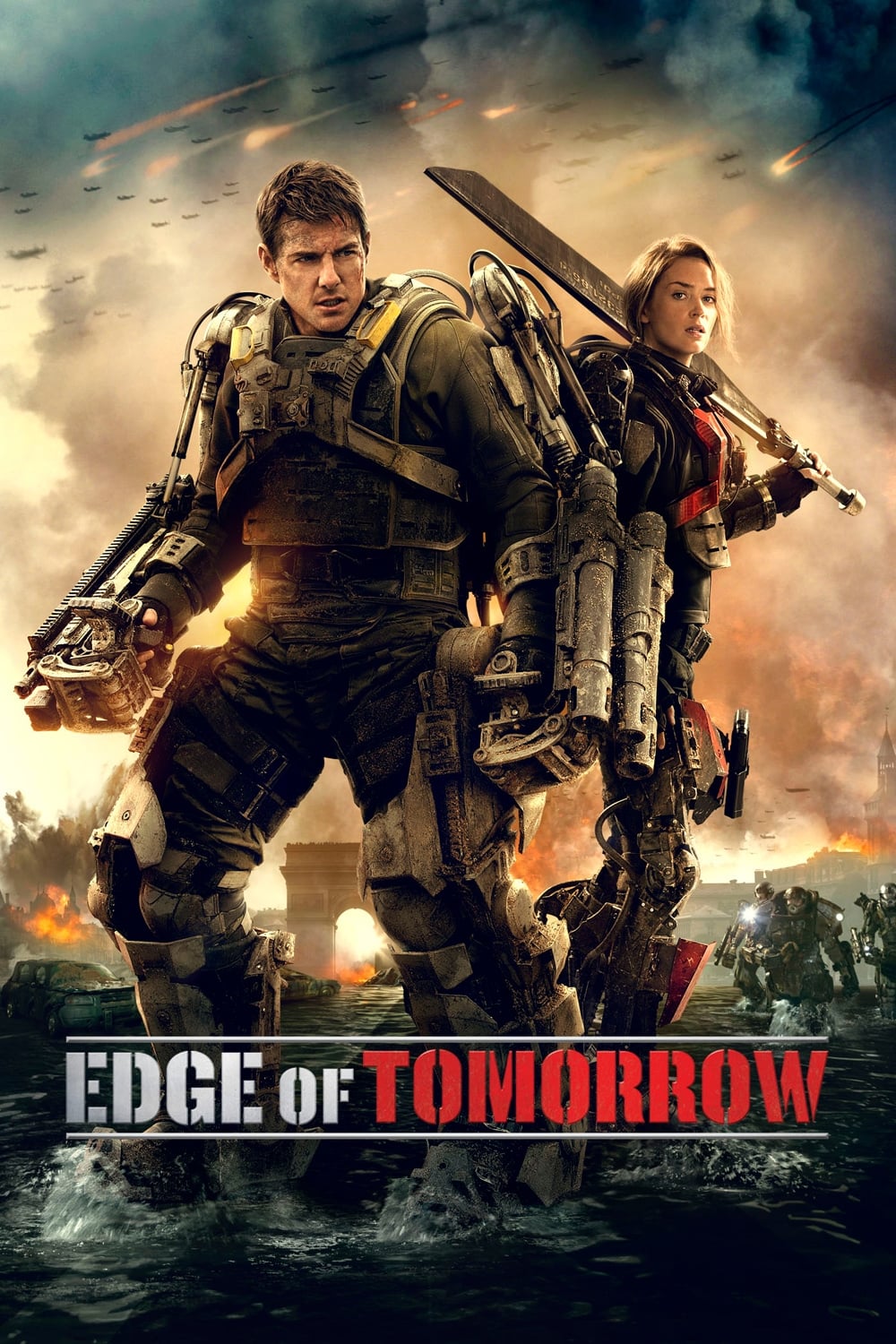
Major Bill Cage is an officer who has never seen a day of combat when he is unceremoniously demoted and dropped into combat. Cage is killed within minutes, managing to take an alpha alien down with him. He awakens back at the beginning of the same day and is forced to fight and die again... and again - as physical contact with the alien has thrown him into a time loop.
05 Feb Edge of Tomorrow (2014)
Combat with Explicit Watchers
Superficially, this has what it needs to be a financial success: novel aliens, lots of combat, competence all around and the smile.
But it also has advanced interesting, structure. This structure did not originate in the movie community, it should be noted. The source is a novel, later adapted to a comic.
Think of it this way, in film terms: traditional noir has an innocent man being plucked out of nowhere to be manipulated for our entertainment. We as watchers become complicit. Here, we have aliens doing the manipulation with us. They are aptly called mimics, with the capability of planting insights into humans to deceive them.
As the story progresses, the goal becomes to kill the master watcher/manipulator, thereby winning. The device is the accidental transfer of story replay from a mimic to our character.
We also meet a woman who was fooled in a previous episode (that we only hear about) and so becomes what we would call a movie celebrity.
And the insights our players get? They are not much different than movies, played over and over again, each time with our hapless hero becoming more in control.
Since Welles wrapped up the phase during which we had true noir, we have had an amazing variety of structural experiments that elaborate or use the device. This one is novel because it places avatars of the audience on screen as combatants and mixes the role of noir hero with their watcher capabilities.
Many viewers compare it to Groundhog Day, but the essentials are quite different. In that construction, it started as a movie (a TeeVee report), but quickly became a kind of coming of age story. Repeated second chances.
No one else on screen had insight into or control over what was going on. This film is profoundly different, having all those explicit in what we see.
This sophistication makes my case that the kinds of noir folds are innovating, evolving quickly. Would a mainstream audience of 15 years ago have accepted this movie? I suppose not, but it all makes sense today to even the most casual viewer.
Posted in 2015
Ted’s Evaluation — 3 of 3: Worth watching.


No Comments